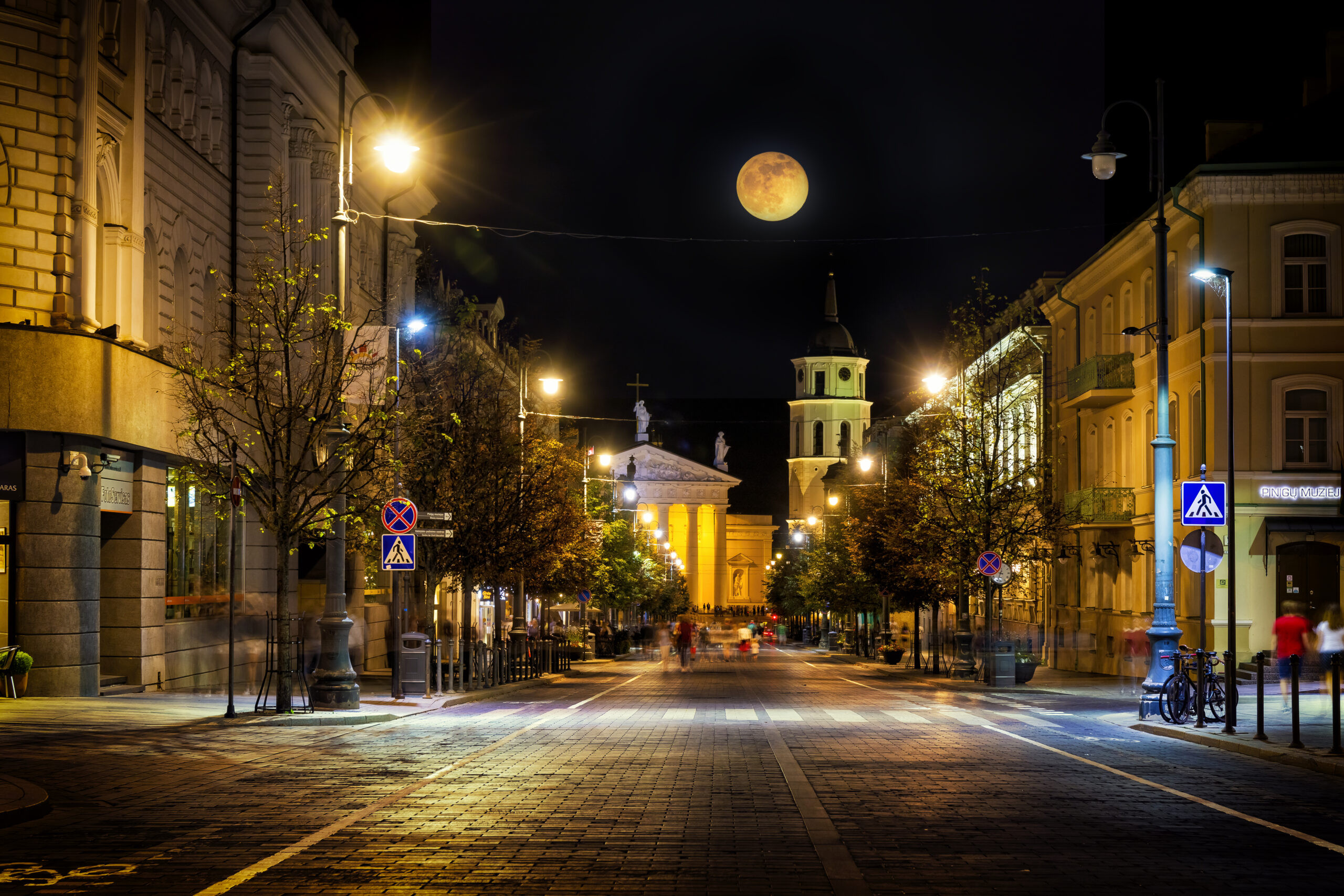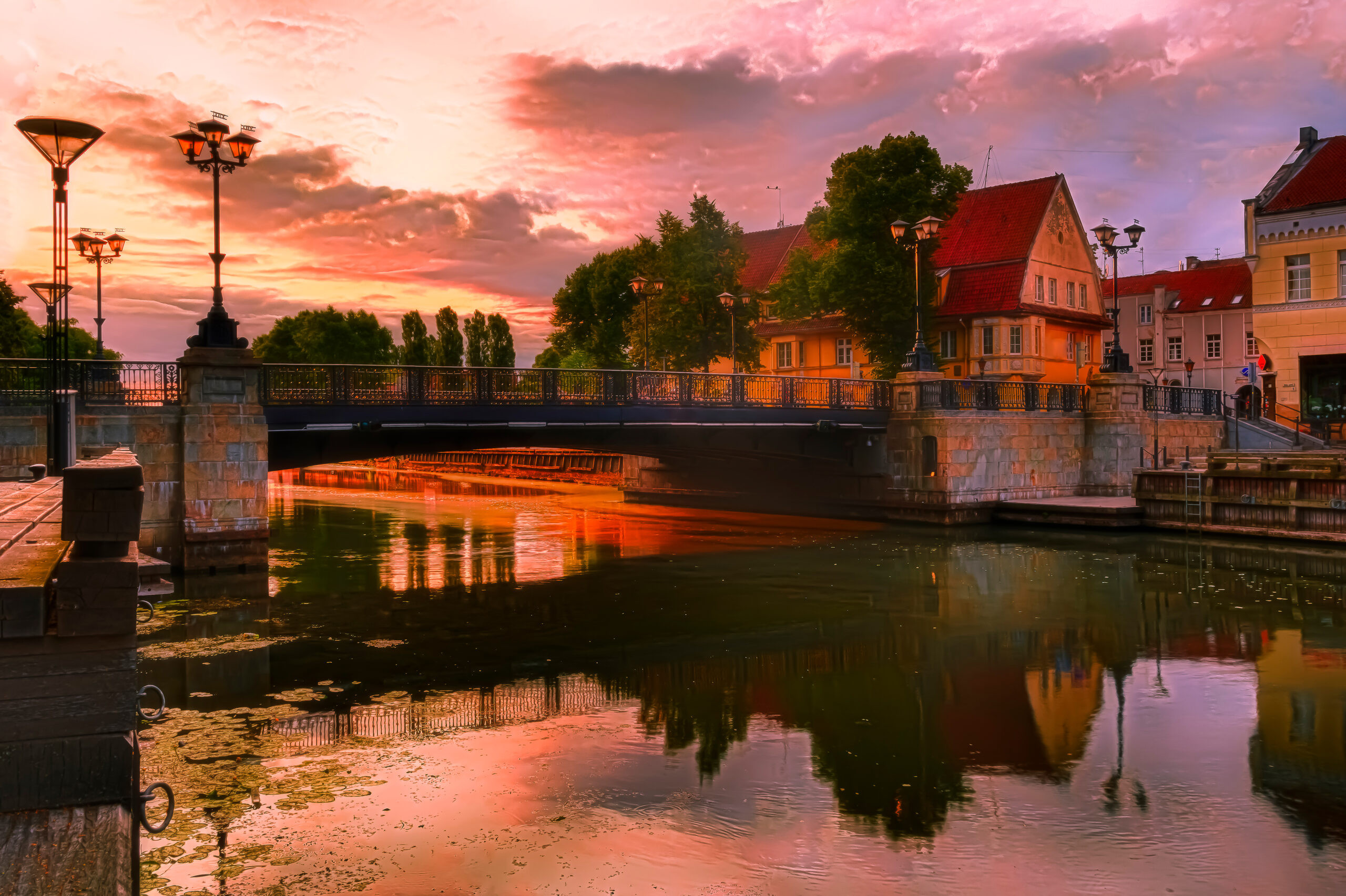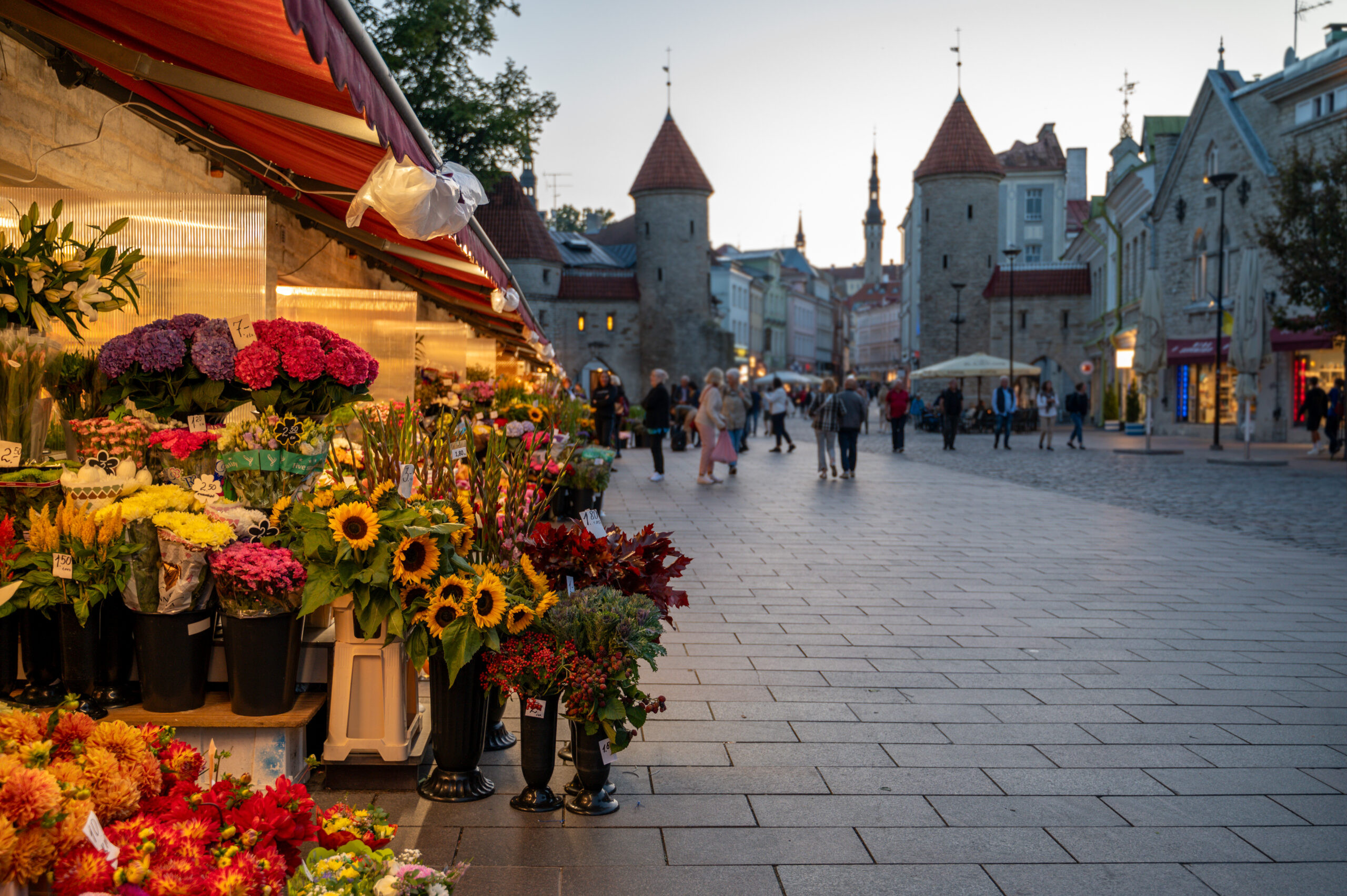Are you curious about exploring the Baltic states? Lithuania, Latvia, and Estonia offer unique travel experiences, but Lithuania often gets overlooked. SIXT.VN is here to shed light on why Lithuania might be less popular and what it has to offer, helping you discover hidden gems and plan an unforgettable Baltic adventure.
1. What Factors Contribute to Lithuania’s Lower Tourism Popularity Compared to Latvia and Estonia?
Several factors contribute to Lithuania’s comparatively lower tourism popularity. According to a 2023 report by the Lithuanian Department of Statistics, while Lithuania has seen consistent tourism growth, it lags behind Latvia and Estonia. This is often attributed to less aggressive marketing campaigns, a lower profile in international media, and perceptions of fewer “must-see” attractions compared to its Baltic neighbors. However, this doesn’t mean Lithuania is any less worthy of a visit.
- Marketing and Promotion: Latvia and Estonia have historically invested more heavily in marketing their countries as tourist destinations. This has led to greater awareness and a stronger brand identity in the international travel market.
- Perception of Attractions: Some tourists may perceive Lithuania as having fewer iconic landmarks or attractions compared to the well-preserved medieval towns of Tallinn (Estonia) and the art nouveau architecture of Riga (Latvia).
- Accessibility: While all three Baltic states are relatively easy to access, certain air routes and transportation options might be more developed for Latvia and Estonia, making them slightly more convenient for some travelers.
2. What Unique Attractions Does Lithuania Offer That Are Often Overlooked by Tourists?
Lithuania boasts a wealth of unique attractions that are frequently overlooked. Vilnius, its capital, features one of the largest and most beautiful Old Towns in Eastern Europe, a UNESCO World Heritage site. The Curonian Spit, a stunning sand dune peninsula shared with Russia, offers breathtaking natural landscapes. Additionally, Lithuania is rich in historical sites, including the Hill of Crosses, a unique pilgrimage destination.
- Vilnius Old Town: As noted by UNESCO, Vilnius Old Town is an exceptionally well-preserved example of a medieval city, boasting a mix of Gothic, Renaissance, and Baroque architecture.
- Curonian Spit: The Curonian Spit, as described by the Curonian Spit National Park, is a narrow, sandy peninsula featuring towering dunes and pine forests, offering stunning views and unique ecological diversity.
- Hill of Crosses: A site of pilgrimage with thousands of crosses, it symbolizes Lithuanian resilience and faith.
 Hill of Crosses near Siauliai, Lithuania. A unique pilgrimage destination with thousands of crosses symbolizing Lithuanian resilience and faith.
Hill of Crosses near Siauliai, Lithuania. A unique pilgrimage destination with thousands of crosses symbolizing Lithuanian resilience and faith.
3. How Does Lithuania’s Capital, Vilnius, Compare to Riga and Tallinn in Terms of Tourist Appeal?
Vilnius, Riga, and Tallinn each offer distinctive appeals. While Riga is famed for its Art Nouveau architecture and Tallinn for its well-preserved medieval Old Town, Vilnius stands out with its Baroque architecture, vibrant arts scene, and a more laid-back atmosphere. According to the “European Best Destinations” survey, Vilnius often ranks high for its cultural offerings and green spaces.
- Vilnius: Offers a blend of historical architecture and a thriving contemporary culture. Its bohemian Užupis district, a self-declared republic, adds a unique, quirky charm.
- Riga: Known for its impressive collection of Art Nouveau buildings, offering a visual feast for architecture enthusiasts. The city also has a lively nightlife and a bustling market scene.
- Tallinn: Famous for its remarkably preserved medieval Old Town, offering a step back in time with its cobblestone streets, historic buildings, and medieval festivals.
4. Are There Any Specific Cultural or Historical Aspects That Make Lithuania a Compelling Destination?
Lithuania has a rich cultural and historical tapestry. Its pagan roots, Grand Duchy era, and resistance to Soviet rule have all shaped its identity. The country’s folk traditions, including unique song and dance festivals, are vibrant. The Lithuanian language, one of the oldest Indo-European languages, adds another layer of cultural richness.
- Pagan Heritage: Lithuania was the last country in Europe to convert to Christianity, preserving unique pagan traditions and folklore.
- Grand Duchy of Lithuania: Its historical legacy includes the Grand Duchy of Lithuania, a powerful medieval state that once controlled vast territories in Eastern Europe.
- Resistance to Soviet Rule: Lithuania’s role in the Singing Revolution and its early declaration of independence from the Soviet Union highlight its strong spirit of freedom.
5. What Types of Travelers Would Most Appreciate a Trip to Lithuania?
Lithuania appeals to a variety of travelers. History buffs will appreciate its castles and historical sites. Nature lovers will enjoy the Curonian Spit and national parks. Those seeking a more authentic and less crowded travel experience will find Lithuania’s charm irresistible. According to a survey by “Baltic Travel News,” cultural tourists and those interested in off-the-beaten-path destinations are particularly drawn to Lithuania.
- History Buffs: The country’s rich and complex history, reflected in its castles, museums, and historical sites, makes it a paradise for history enthusiasts.
- Nature Lovers: Lithuania’s stunning natural landscapes, including the Curonian Spit, national parks, and numerous lakes and forests, offer endless opportunities for outdoor activities.
- Cultural Tourists: With its vibrant folk traditions, unique language, and thriving arts scene, Lithuania provides a deep dive into Baltic culture.
6. How Does the Cost of Travel in Lithuania Compare to That of Latvia and Estonia?
Generally, Lithuania tends to be slightly more affordable than Latvia and Estonia. According to price comparison websites like Numbeo, costs for accommodation, food, and transportation are often lower in Lithuania. This makes it an attractive option for budget-conscious travelers who still want to experience the Baltic region.
- Accommodation: Hotel and guesthouse prices are generally lower in Lithuania compared to Latvia and Estonia.
- Food: Dining out and grocery costs are typically more affordable, allowing for a more budget-friendly culinary experience.
- Transportation: Public transportation and rental car rates tend to be slightly lower, making it easier and cheaper to explore the country.
7. What Are Some Popular Misconceptions About Lithuania That Might Deter Tourists?
Some common misconceptions deterring tourists include the belief that Lithuania is dull, lacks attractions, or is unsafe. In reality, Lithuania is a vibrant country with a rich history, stunning landscapes, and a safe environment. A study by the Lithuanian Tourism Board found that visitors are often surprised by the country’s beauty and cultural richness, debunking these misconceptions.
- Dull and Lacking Attractions: Lithuania offers a diverse range of attractions, from its historical cities and castles to its stunning natural landscapes and unique cultural sites.
- Unsafe Environment: Lithuania is a safe country with low crime rates, providing a secure and welcoming environment for tourists.
- Homogenous Culture: Lithuania has a unique and distinct culture, shaped by its pagan roots, Grand Duchy era, and resistance to Soviet rule, offering a rich and varied cultural experience.
8. What Practical Tips Can Help First-Time Visitors Make the Most of Their Trip to Lithuania?
For first-time visitors, learning a few basic Lithuanian phrases can enhance the experience. Exploring beyond the capital, Vilnius, is highly recommended to discover the country’s diverse regions. Using local transportation, such as buses and trains, is a cost-effective way to travel. Additionally, being aware of local customs and etiquette will help ensure a respectful and enjoyable visit.
- Learn Basic Lithuanian Phrases: Knowing a few basic phrases can help you connect with locals and show respect for their culture.
- Explore Beyond Vilnius: Venture out to discover the country’s diverse regions, from the coastal city of Klaipėda to the historical city of Kaunas.
- Use Local Transportation: Take advantage of the cost-effective and efficient public transportation system to travel between cities and explore the countryside.
 Old Town at sunrise in Klaipeda, Lithuania, a summer escape with its charming riverbanks and broad promenades.
Old Town at sunrise in Klaipeda, Lithuania, a summer escape with its charming riverbanks and broad promenades.
9. How Can Travelers Contribute to Sustainable Tourism Practices While Visiting Lithuania?
Travelers can support sustainable tourism by choosing eco-friendly accommodations, respecting local customs, and buying locally made products. Reducing waste, using public transport, and visiting off-the-beaten-path destinations can also minimize their environmental impact. Supporting local businesses and initiatives ensures that tourism benefits the local community.
- Eco-Friendly Accommodations: Opt for hotels and guesthouses that prioritize sustainability and environmental practices.
- Respect Local Customs: Be mindful of local traditions and etiquette, and show respect for the culture and heritage of Lithuania.
- Buy Locally Made Products: Support local artisans and businesses by purchasing handmade crafts and regional specialties.
10. What Emerging Trends or Developments Could Potentially Boost Lithuania’s Tourism Industry in the Future?
Several emerging trends could boost Lithuania’s tourism industry. Increased investment in tourism infrastructure, such as improved transportation and accommodation options, can attract more visitors. Promoting sustainable and eco-friendly tourism can appeal to environmentally conscious travelers. Highlighting Lithuania’s unique cultural heritage and natural beauty through targeted marketing campaigns can also raise its profile on the global stage.
- Investment in Tourism Infrastructure: Upgrading transportation networks, accommodation options, and tourist facilities can enhance the overall travel experience.
- Promotion of Sustainable Tourism: Emphasizing eco-friendly practices and promoting responsible travel can attract environmentally conscious visitors.
- Targeted Marketing Campaigns: Highlighting Lithuania’s unique cultural heritage, natural beauty, and historical sites through strategic marketing can raise its profile and attract more tourists.
11. What type of accommodation are available in Lithuania?
Lithuania offers a diverse range of accommodation options to suit various preferences and budgets. According to the Lithuanian Department of Statistics, the country has seen growth in both traditional and alternative lodging choices.
- Hotels: Ranging from luxury hotels in Vilnius and other major cities to more budget-friendly options in smaller towns.
- Guesthouses: Offering a more intimate and personalized experience, often run by local families.
- Apartments: A popular choice for travelers seeking self-catering options, especially in urban areas like Vilnius, Kaunas, and Klaipeda.
- Hostels: Provide affordable accommodation for budget travelers and backpackers, with options available in most cities.
- Rural Tourism: Farm stays and countryside cottages offer a unique experience, allowing visitors to immerse themselves in Lithuania’s natural beauty.
12. What is the best time to visit Lithuania?
The best time to visit Lithuania is during the summer months, from June to August. According to the Lithuanian Hydrometeorological Service, this period offers the most pleasant weather conditions, with warm temperatures and long daylight hours.
- Summer (June to August): Ideal for outdoor activities, sightseeing, and enjoying the Baltic coastline.
- Spring (April to May) and Autumn (September to October): Offer milder weather and fewer crowds, suitable for those who prefer a quieter travel experience.
- Winter (November to March): Can be cold with snow, but offers unique experiences like winter festivals and ice-skating.
13. What are the means of transportation available in Lithuania?
Lithuania offers a variety of transportation options for travelers. According to the Lithuanian Department of Transport, the country has a well-developed infrastructure that supports both public and private transportation.
- Buses: The most common and affordable way to travel between cities and towns, with frequent connections and comfortable coaches.
- Trains: Lithuanian Railways (Lietuvos Geležinkeliai) operates a network of trains connecting major cities, offering a scenic and comfortable travel option.
- Car Rentals: Available at airports and major cities, providing flexibility for exploring the countryside and remote areas.
- Taxis and Ride-Sharing Services: Readily available in urban areas, offering convenient transportation within cities.
- Ferries: Connect Klaipeda with other Baltic ports, providing an alternative way to travel to and from Lithuania.
14. What are some of the popular cities that tourist should visit in Lithuania?
Lithuania boasts several cities that offer unique attractions and experiences for tourists. According to Lithuanian Tourism Association, the following cities are highly recommended:
- Vilnius: The capital city, renowned for its UNESCO-listed Old Town, Baroque architecture, and vibrant cultural scene.
- Kaunas: The second-largest city, offering a mix of historical landmarks, modern art, and a lively atmosphere.
- Klaipeda: A coastal city with a rich maritime history, beautiful beaches, and the gateway to the Curonian Spit.
- Trakai: Known for its stunning island castle, set on Lake Galvė, and its unique Karaite cultural heritage.
- Šiauliai: Home to the Hill of Crosses, a unique pilgrimage site with thousands of crosses.
 Flowers market in Estonia’s old town Tallinn on a summer evening, also a walkable, pleasant and safe location.
Flowers market in Estonia’s old town Tallinn on a summer evening, also a walkable, pleasant and safe location.
15. What Lithuanian dishes and drinks are a must-try?
Lithuanian cuisine is hearty and flavorful, offering a range of dishes that reflect the country’s history and traditions. According to Lithuanian Culinary Heritage Foundation, the following dishes and drinks are a must-try:
- Cepelinai: Potato dumplings filled with meat, cheese, or mushrooms, served with sour cream and bacon.
- Šaltibarščiai: Cold beetroot soup, a refreshing summer dish made with kefir, cucumbers, and dill.
- Kugelis: A baked potato pudding with bacon and onions, a hearty and comforting dish.
- Šakotis: A unique tree-shaped cake, traditionally baked over an open fire for special occasions.
- Gira: A traditional fermented beverage made from rye bread, offering a slightly sweet and tangy flavor.
- Mead: An alcoholic beverage made from honey, a traditional drink with a rich history in Lithuania.
16. What are the visa requirements and entry policies for Lithuania?
Lithuania is part of the Schengen Area, which means that many nationalities can enter without a visa for up to 90 days. According to the Lithuanian Ministry of Foreign Affairs, the following applies:
- Visa-Free Entry: Citizens of the European Union, the United States, Canada, Australia, and many other countries can enter Lithuania without a visa for tourism purposes for up to 90 days within a 180-day period.
- Visa Requirements: If you require a visa, you must apply at a Lithuanian embassy or consulate in your country of residence.
- Passport Validity: Ensure your passport is valid for at least three months beyond your intended stay in Lithuania.
- Travel Insurance: While not mandatory, it is highly recommended to have travel insurance that covers medical expenses, accidents, and repatriation.
17. What are some of the most popular activities that tourists can do in Lithuania?
Lithuania offers a wide range of activities for tourists, catering to various interests and preferences. According to Lithuanian Tourist Board, here are some of the most popular:
- Explore Vilnius Old Town: Wander through the cobblestone streets, visit historical landmarks, and soak in the Baroque architecture.
- Visit Trakai Island Castle: Explore the medieval castle, enjoy boat rides on Lake Galvė, and sample traditional Karaite cuisine.
- Discover the Curonian Spit: Hike through the sand dunes, relax on the beaches, and visit the charming fishing villages.
- Reflect at the Hill of Crosses: Visit this unique pilgrimage site and admire the thousands of crosses.
- Explore Kaunas: Discover the city’s historical sites, visit the Ninth Fort Memorial, and enjoy the vibrant cultural scene.
- Relax in Birštonas: Visit the popular spa resort in Lithuania
18. How do travelers get local sim card in Lithuania?
Getting a local SIM card in Lithuania is relatively easy and can be a cost-effective way to stay connected. According to various travel blogs and forums, here’s how:
- Availability: SIM cards are available at airports, convenience stores, supermarkets, and mobile carrier stores.
- Mobile Operators: The main mobile operators in Lithuania are Telia, Tele2, and Bitė.
- Required Documents: You may need to present your passport or ID card when purchasing a SIM card.
- Prepaid Plans: Look for prepaid plans that offer data, calls, and texts at affordable rates.
- Activation: The SIM card can be activated by following the instructions provided by the mobile operator.
19. Is Lithuania a safe place to visit?
Lithuania is generally considered a safe place to visit. According to the Global Peace Index, Lithuania ranks highly for safety and security.
- Low Crime Rates: Lithuania has relatively low crime rates compared to other European countries.
- Safe for Solo Travelers: It is generally safe for solo travelers, including women, to explore the country.
- Petty Theft: Like any other tourist destination, petty theft can occur, so it is advisable to take precautions and be aware of your surroundings.
- Emergency Services: In case of an emergency, dial 112 for police, ambulance, or fire services.
20. What are the best ways to experience Lithuania’s nature and national parks?
Lithuania offers numerous opportunities to experience its natural beauty and national parks. According to the State Service for Protected Areas, the following are some of the best ways:
- Hiking: Explore the diverse trails in national parks like Aukštaitija, Dzūkija, and Curonian Spit.
- Cycling: Rent a bike and cycle along the scenic routes in national parks and coastal areas.
- Kayaking and Canoeing: Paddle along the rivers and lakes in national parks and enjoy the tranquility of nature.
- Birdwatching: Visit the Nemunas Delta Regional Park, a paradise for birdwatchers with diverse bird species.
- Camping: Set up a tent at designated campsites in national parks and enjoy a night under the stars.
- Wildlife Watching: Visit wildlife reserves and forests to spot animals like deer, boars, and lynx.
21. What are some festivals and events to attend in Lithuania?
Lithuania hosts a variety of festivals and events throughout the year, showcasing its culture, traditions, and arts. According to the Lithuanian Council for Culture, the following are some of the most popular:
- Kaziukas Fair: A traditional crafts fair held in Vilnius in early March, showcasing Lithuanian folk art and crafts.
- Lithuanian Song and Dance Festival: A grand celebration of Lithuanian folk music and dance, held every four years.
- Sea Festival: A maritime festival held in Klaipeda in late July, celebrating the city’s seafaring heritage.
- Vilnius International Film Festival: Showcasing a diverse range of films from around the world in late March.
- Christopher Summer Festival: A classical music festival held in Vilnius throughout the summer months.
- Užupis Republic Day: A celebration of the independent Republic of Užupis in Vilnius on April 1st, featuring quirky events and festivities.
22. What are some unique souvenirs to buy in Lithuania?
Lithuania offers a variety of unique souvenirs that reflect the country’s culture and traditions. According to local craft shops and markets, the following are some popular choices:
- Amber Jewelry: Lithuania is known for its amber, so consider buying amber necklaces, bracelets, or earrings.
- Linen Products: Linen clothing, tablecloths, and towels are popular souvenirs, known for their quality and durability.
- Wooden Crafts: Handcrafted wooden items, such as carvings, toys, and kitchen utensils, are great souvenirs.
- Ceramics: Traditional Lithuanian ceramics, including plates, bowls, and mugs, are beautifully decorated and functional.
- Rye Bread: A loaf of traditional Lithuanian rye bread makes a unique and tasty souvenir.
- Local Honey: Lithuanian honey is known for its high quality and unique flavors, making it a sweet souvenir.
23. How can travelers immerse themselves in Lithuanian culture?
There are many ways for travelers to immerse themselves in Lithuanian culture.
- Learn the Lithuanian Language: Try to learn a few basic phrases in Lithuanian.
- Visit Local Markets: Explore local markets like Hales Market in Vilnius to experience local life.
- Attend Cultural Events: Check out local listings for traditional music, dance performances, and theater productions.
- Try Traditional Cuisine: Sample traditional Lithuanian dishes in local restaurants.
- Stay in Local Guesthouses: Opt for smaller, family-run guesthouses for a more authentic experience.
- Visit Local Museums: Explore museums like the National Museum of Lithuania to learn about the country’s history.
24. What is the currency used in Lithuania, and how does payment works?
The currency used in Lithuania is the Euro (€).
- Payment Methods: Credit and debit cards are widely accepted in most establishments, especially in cities.
- Cash: It’s advisable to carry some cash, especially when visiting rural areas.
- ATMs: ATMs are readily available in cities and towns.
- Currency Exchange: Currency exchange services can be found at airports, banks, and exchange offices.
25. Are there any etiquette tips that travelers should be aware of when visiting Lithuania?
When visiting Lithuania, it’s helpful to be aware of some local etiquette tips.
- Greetings: A firm handshake is a common greeting.
- Table Manners: Keep your hands above the table during meals.
- Tipping: Tipping is not mandatory, but appreciated for good service.
- Respect for History: Show respect for historical sites and monuments.
- Dress Code: Dress modestly when visiting religious sites.
- Communication: Speak politely and avoid being overly loud.
26. How easy it is to travel from Lithuania to other Baltic countries, such as Latvia and Estonia?
Traveling from Lithuania to other Baltic countries, such as Latvia and Estonia, is relatively easy and convenient.
- By Bus: Several bus companies operate routes between major cities in Lithuania, Latvia, and Estonia.
- By Car: Renting a car allows for flexible travel between the Baltic countries.
- By Train: While train connections are limited, there are some routes available between major cities.
- By Ferry: Ferries connect Klaipeda with other Baltic ports, providing an alternative travel option.
27. How can SIXT.VN enhance travel experience in Lithuania?
SIXT.VN can significantly enhance your travel experience in Lithuania by providing convenient and reliable services tailored to your needs.
- Airport Transfers: SIXT.VN offers airport transfer services to ensure a smooth and hassle-free arrival and departure.
- Hotel Booking: With SIXT.VN, you can easily book accommodations that suit your budget and preferences.
- Tour Packages: SIXT.VN provides curated tour packages that showcase the best of Lithuania, catering to various interests.
Don’t let Lithuania’s lower profile deter you. With its rich history, stunning landscapes, and vibrant culture, Lithuania offers a unique and rewarding travel experience. Let SIXT.VN help you plan your Lithuanian adventure with our convenient airport transfer, hotel booking, and tour package services.
Ready to explore the hidden gem of the Baltics? Contact SIXT.VN today to book your airport transfer, find the perfect hotel, or discover a tailored tour package. Call us at +84 986 244 358 or visit our website at SIXT.VN, Address: 260 Cau Giay, Hanoi, Vietnam.
FAQ About Tourism in Lithuania
1. Why is Lithuania less known than Latvia and Estonia?
Lithuania is often less promoted, resulting in less international visibility compared to its neighbors.
2. What are some unique attractions in Lithuania?
Vilnius Old Town, Curonian Spit, and Hill of Crosses are unique Lithuanian attractions.
3. Is Vilnius as appealing as Riga and Tallinn?
Vilnius offers a unique Baroque charm, a vibrant arts scene, and a laid-back atmosphere, distinct from Riga and Tallinn.
4. What makes Lithuanian culture compelling?
Its pagan roots, Grand Duchy history, and resistance to Soviet rule create a rich cultural tapestry.
5. Who would enjoy traveling to Lithuania?
History buffs, nature lovers, and those seeking authentic experiences will appreciate Lithuania.
6. How does Lithuania compare in cost to Latvia and Estonia?
Lithuania tends to be more affordable than Latvia and Estonia for accommodation, food, and transportation.
7. What are common misconceptions about Lithuania?
That it’s dull, lacks attractions, or is unsafe, which are untrue given its beauty and safety.
8. What tips can help first-time visitors to Lithuania?
Learn basic phrases, explore beyond Vilnius, and use local transportation for a richer experience.
9. How can sustainable tourism be practiced in Lithuania?
Choose eco-friendly accommodations, respect customs, buy local, and reduce waste.
10. What could boost Lithuania’s tourism industry?
Investing in infrastructure, promoting sustainable tourism, and highlighting unique attractions.



